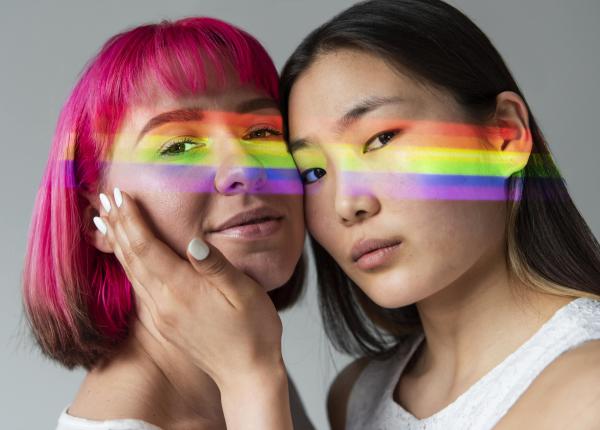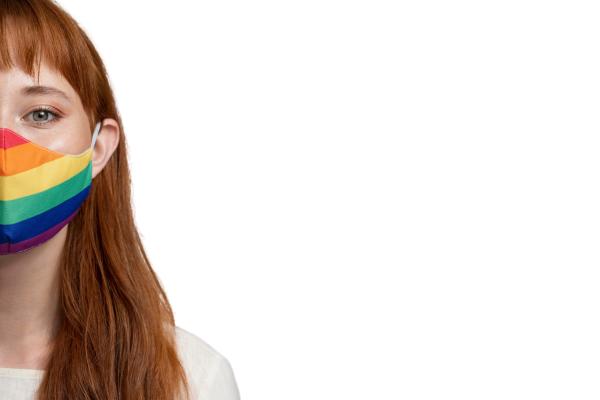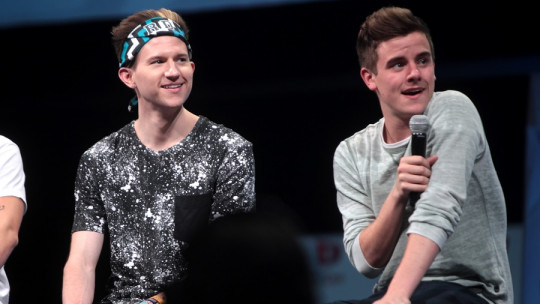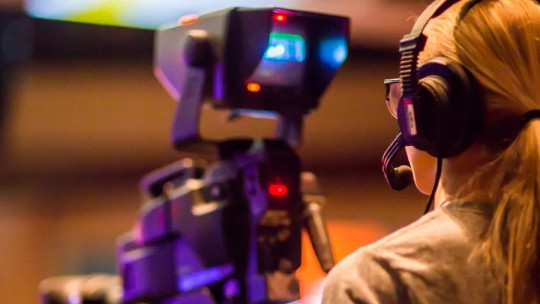
Queerbating is a marketing strategy that seeks to attract audiences from the LGBTQ+ community, making them believe that the characters in a movie or series feel an affinity or attraction. Even so, no homoerotic story ever comes to fruition, as it is only to keep the community’s audience hooked.
This strategy is being implemented by many content creators in the media to suggest relationships or experiences that allow the LGBTQ+ community to feel identified and become part of the audience. In this PsychologyFor article, we will tell you What is queerbating and why does it harm the LGBTQ+ community?.
What is queerbating
He queerbaiting It is a practice that suggests the affinity between LGBTQ+ characters in movies, television shows or books, in order to appeal to LGBTQ+ audiences without actually committing to sincerely representing them. It can also be observed in music or in stories told in novels that only want to sell a lot.
So, when a plot hints that two characters of the same sex are attracted to each other, but never makes it concrete, only the LGBTQ+ community is used to consume the media product. The objective is to make them believe that it is a story with inclusivity, when in reality it is just a “bait” or “bait” for the story to sell.
In short, the creators resort to experiences, iconography, or some type of reference queer, to engage community members. In a romantic movie or series, this technique is sometimes used when looks, gestures, comments or any scenario that suggests a relationship between characters of the same sex is observed, without the plot being resolved in the end. To better understand who is affected by queerbating we recommend you read this article on Types of sexuality.
Origin of the term queerbating
Through the queerbating a romantic or erotic attraction is created in characters of the same sex without the story developing completely. This term combines the word of English origin queer, to refer to members of the LGBTIQ+ community, as well as other identities that do not identify as heterosexual, and the word batting, which translates as “placing bait.”
That term it started to be used because, previously, the representation of homosexual characters was not legal according to Hays code, a regulation that indicated what was acceptable or not to present in the media. Therefore, those who really wanted to involve the community used some type of wink, but without giving a complete or explicit sample. At the end of the 1960s this code was repealed, but the performances were still uncomfortable for many people.
Why queerbating harms the LGBTQ+ community
He queerbating affects the LGBTQ+ community because their experiences are used to engage them in audiovisual content, creating false expectations. Furthermore, it continues to reinforce heteronormativity in the media, which is why the community continues to be excluded in the world of entertainment and does not have true representation. To better understand why it works, don’t miss this article on Vroom’s Expectancy Theory: Formula and Examples.
On the one hand, some foundations argue that the queerbating attacks the representation of the LGBTQ+ communitysince the stories ultimately focus on the relationships maintained by heterosexually oriented characters, excluding diversity.
On the other hand, the actors who act in the performances are not part of the community, so it, once again, continues to be excluded. In addition to this, there is a emotional and psychological exhaustion on the members of the community, by waiting for something to “happen” that never happens.
The experiences of the community are also trivialized, since the experiences between heterosexual couples are the ones that develop the most widely and reach an outcome, which can affect the members of the community, feel invisible. In this situation, you can consult this article on How to feel better about yourself.

Examples of queerbating in film and television
If you want to see examples of queerbatingPlease pay attention to the following:
- Rizzoli & Islands: It is a series that focuses on solving crimes, but the innovation is that, unlike the others of this genre in which there is a group of men and women, in this one only two women appear as protagonists. At first, it seems that they have failed in their relationships with men, but then a path opens up that romanticizes the relationship between them. In the end, it has nothing to do with it.
- Frozen 2: There is a hint that Elsa could be a lesbian, especially when the protagonist talks with another girl from the forest in front of a bonfire, but without developing the story.
- Habia una vez: Also shows a tension between Emma and Regina. The producers of the series made no official statements, but the script suggests a possibility about romantic interests between the two women.
- sherlock:eIt’s a series that opens the doors to queerbaiting with the relationship between Sherlock and Watson, which leads the public to wonder if the characters are really friends or have another type of relationship.
- Supernatural: this series also encouraged the queerbaiting through the ambiguous relationship between Castiel and Dean Winchester that, in the end, takes an unexpected turn when Dean was confused and Castiel clarifies the meaning of their friendship. This series kept the entire community in suspense until the last season, without a real rapprochement occurring.
- Marline: It was another series that focused on the relationship of two boys, but in the end it left a void and it was confirmed that the relationship was only friendly, despite all the protective attempts between both actors.
- The 100: It shows a lesbian relationship that did not last at all, was short and only had a small wink. In fact, one of the protagonists, Lexa, ends up dying, so there’s not much to expect from this series either.
- Voltron: was another series that sold an openly gay character. Shiro and Adam had many experiences that involved them romantically, but Adam also dies. This series received a lot of criticism, and the director had to openly apologize in a long letter.
- Billie Eilish: is another example of queerbaiting who, although she does not belong to cinema or television, has also been criticized for having published photos on her Instagram account with a caption where she states “I love girls.” The singer was accused of playing with this idea, without it being real or sincere. This is another example of how this strategy is used in many areas.
This article is merely informative, at PsychologyFor we do not have the power to make a diagnosis or recommend a treatment. We invite you to go to a psychologist to treat your particular case.
If you want to read more articles similar to What is queerbating and why it harms the LGBTQ+ community we recommend that you enter our Social Psychology category.
Bibliography
- Brennan, J. (2018). Queerbaiting: The ‘playful’ possibilities of homoeroticism. International journal of cultural studies, twenty-one(2), 189-206.
- Goldyn, L. (1981). Gratuitous language in appellate cases involving gay people: “Queer bating” from the bench. Political Behavior, 331-48.
- Ng, E. (2017). Between text, paratext, and context: Queerbaiting and the contemporary media landscape. Transformative Works and Cultures, 24.
- Trepier, A. (2022). Audiences’ reactions to queerbating: a case study of the television series Gotham (Warner, 2014-2019). Communication studies, 59(2), 55-73.








